

Discover more from Write More, Be Less Careful
how do you care for your attention?
how sacred spaces, Real Things, and no-phone walks can help you have a happier, more productive writing life
Today I’m excited to share another entry in the new tending section, which is a mix of essays and interviews about creative practice that do a deeper dive into a particular craft element or process question.
Normally, this space features guest writers, but today it’s me! I’m trying out an experiment across this spring semester, where I’ll be sharing exercises and experiments designed to help you better care for your attention as a route into a happier, less frazzled writing life.
I’d love your suggestions of other writers and artists to feature in this series, so feel free to email me with ideas. You can just hit “reply” to this newsletter.
Hello there. My spring semester started yesterday, and I’m back to teaching one of my favorite classes, an interdisciplinary capstone course I designed around Jenny Odell’s How to do Nothing, called Resisting the Attention economy. The course description begins like this:
The secret title of this course is “Senior Seminar in Doing Nothing.” But not just any kind of nothing: in this class, we’ll be learning about and practicing a particular kind of Nothing, one that’s modeled after Jenny Odell’s How to Do Nothing, our primary course text.
We often think about attention in economic terms: we’re paying attention, or not. In the attention economy, apps and websites compete for “eyeballs,” treating attention as a resource that can be sought after and commodified. Is attention something we can spend? How can we cultivate habits of attention? What are you doing with your attention? Does the way you use your attention support your goals and align with your values? How might we practice attention differently?

I designed that course in the spring of 2021, with the idea that I’d teach it in a post-pandemic spring 2022. I was imagining that, after all that time on zoom and in our houses, we’d gather in person and try out lots of ways to reconnect with our attention and each other. That wasn’t quite the reality of that spring, of course—my semester began with me getting covid and missing the first week of teaching, and though we were in person, we were also (quite wisely) wearing masks all semester. We began the semester by reading “To Gather Together” by Erika Meitner, which imagines a post-pandemic life in which we might
summon everyone
back to this abundant & skeletal planet
after we’ve jettisoned the billionaires
into space.
As I was getting ready to teach the class a second time this spring, I realized I’d missed something important: it’s not enough to just practice enough; we have to care for our attention, too. So this semester, we’re reading Jenny Odell and doing all kinds of fun activities related to the central ideas in that book—but we’re also going to try out all kinds of experiments to help us learn how to better care for our attention. I thought I’d pop in here a couple times along the way and share what we’re trying and how it’s working. I really believe that caring for your attention is one of the best paths into having a happy writing life.
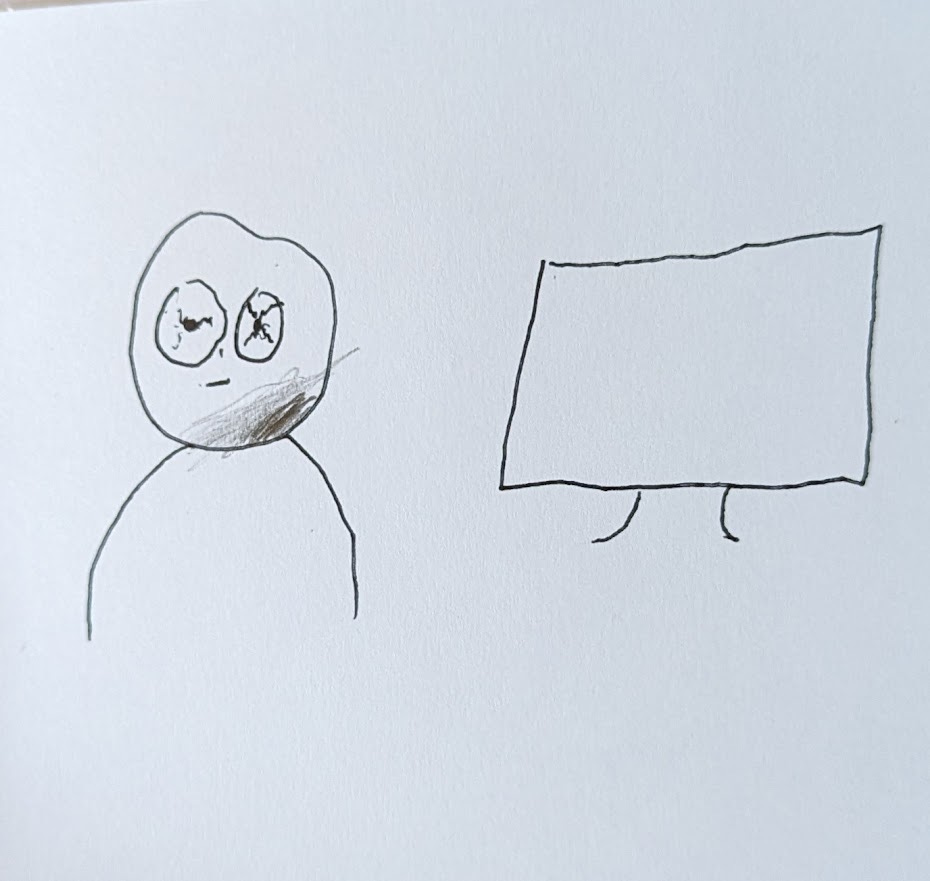
if you’d like to try it out . . .
My students and I are starting the semester with a couple core practices for caring for your attention: creating sacred spaces and taking Real Things/no-phone walks.
I borrowed the term sacred spaces from psychologist Sherry Turkle, who argues that we should define device-free zones where we can better connect with each other. (She suggests the kitchen, the dining room, and the car.) Turkle’s real interest is in interpersonal connections, but I think sacred spaces are important for maintaining the connection to your own creative mind that’s essential for writing. I wrote much of The Good Mother Myth at a co-working space in town, and I made a rule early on that I wouldn’t take my phone there. Most days, I’d walk the mile-ish from my house and use that blank space in the day to think about the work ahead of me, or just try to reconnect with the actual three dimensional world before moving into writing. (If you can’t keep your phone entirely out of your writing space, I’ve found that at least moving it out of arm’s reach helps.)
The Real Things/no-phone walk is straightforward: go for a walk and record at least ten Real Things. The term comes from poet Linda Gregg’s essay, The Art of Finding, and, as she explains, these should be “not beautiful or remarkable things, just things.” So, as you look for things, focus on nouns. Be sparing with your modifiers. No metaphors or gorgeous descriptive language. Just Things. The idea of the Real Things walk is about connecting with the zing of noticing that so often sparks creative work. (I wrote about Real Things in my second-ever post here! A longstanding obsession!)
So, if you’d like to join us in this experiment of learning to care for our attention, try designating a sacred space for your writing, and taking yourself on a Real Things walk. I’d love to know how it goes.
What other tips do you have for caring for your attention?
more on attention, from the archives
on creating more ease and rest in a writing practice
a conversation about leaving the door open for creativity
a craft essay I wrote for Electric Literature, about Jenny Odell’s work and how “Making Space for Doing Nothing Helps My Artistic Practice”
write with me in Florida this March
I spent this past weekend leading poetry workshops at the Murphy Writing Winter Poetry & Prose Getaway (that’s quite a mouthful! people normally just call it the Getaway) and I was reminded of what a wonderful, warm space it is for writers of all genres and experience levels. If you could use an encouraging, generative space to some writing this spring, I’d love for you to join us at the Getaway to Write—Florida, from March 19-24. Last spring, I taught a memoir workshop full of some of the smartest, kindest writers I’ve ever met, I could truly cry right now just thinking about the magic in that space. (And, in case you need a little more enticement, the workshop is at the beautiful Atlantic Center for the Arts, and the food is excellent.) I’m so thrilled to be returning to the Florida Getaway, and this time, I’m leading the poetry group. Here’s the workshop description:
The Gift of Constraint: A Poetry Workshop
Sometimes the muse speaks to you, but what do you do when you’re running low on inspiration? Though it may seem counterintuitive, writing poems to fit the rules of forms can free your creative brain to make new leaps. Form can also be freeing when you’re working with difficult material—functioning, as poet Maggie Smith has written, like oven mitts to help us handle experiences still emotionally hot to the touch. In this inspiring workshop, we’ll draft in received forms like the sonnet and the pantoum, create nonce or invented forms, and shake poems from form back into free verse. Whether you’re new to poetry or already have a deck of sestinas and villanelles up your sleeve, this workshop will provide you with opportunities to experiment with lots of new forms and develop strategies for finding the right shape for each piece.
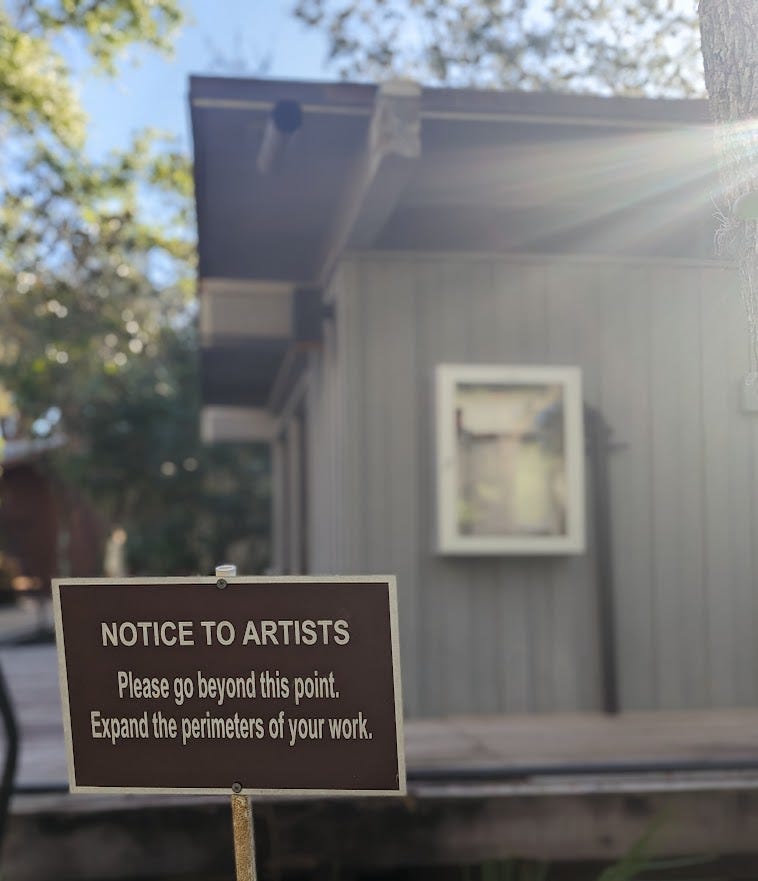
You can read more about the Getaway here, and there’s still a few days to apply for a $500 scholarship if you’re a first time participant—the scholarship application deadline is January 20!
Write More, Be Less Careful is a newsletter about why writing is hard & how to do it anyway. I’m so glad you’re here.
If Write More has helped you in your creative life, I’d love it if you would share it with a friend.
Subscribe to Write More, Be Less Careful
why writing is hard & how to do it anyway








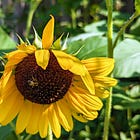
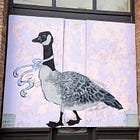






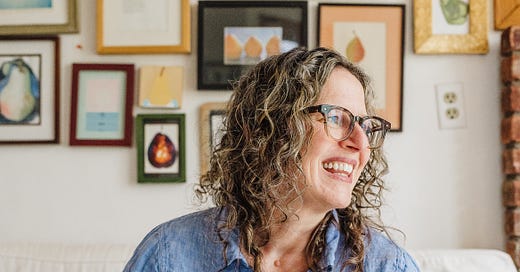





I’m going to try leaving my phone at home for the walk to and from daycare. It’s only 10 minutes but baby steps, right?
I have a shed in the garden with a typewriter in it & a normal clock alarm timer. It’s always a bit hard to make myself go out there but a few steps from the back door and I’m flying